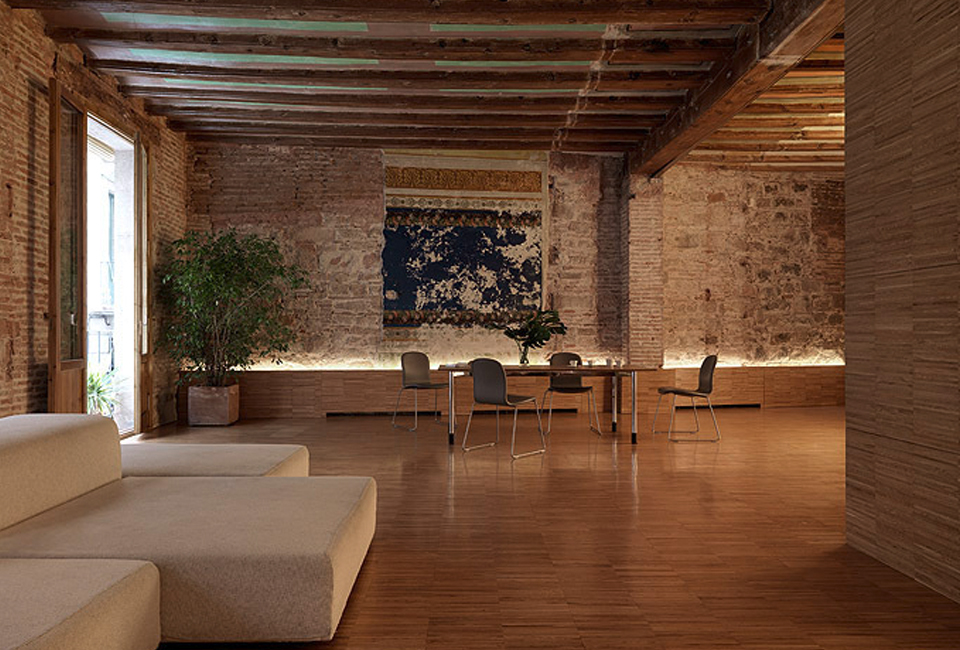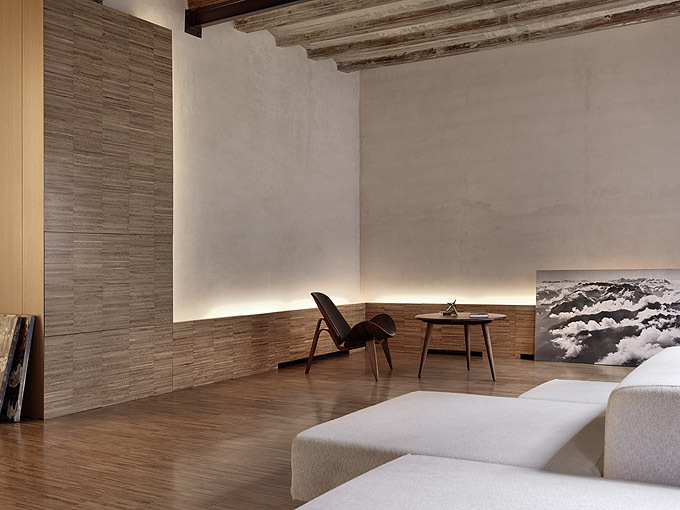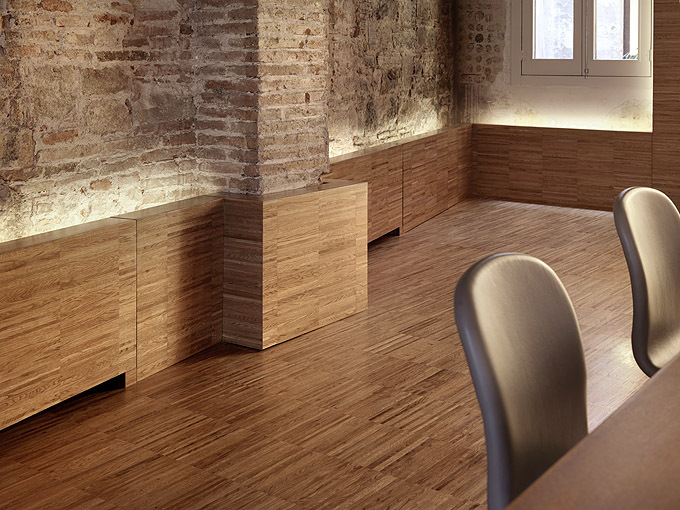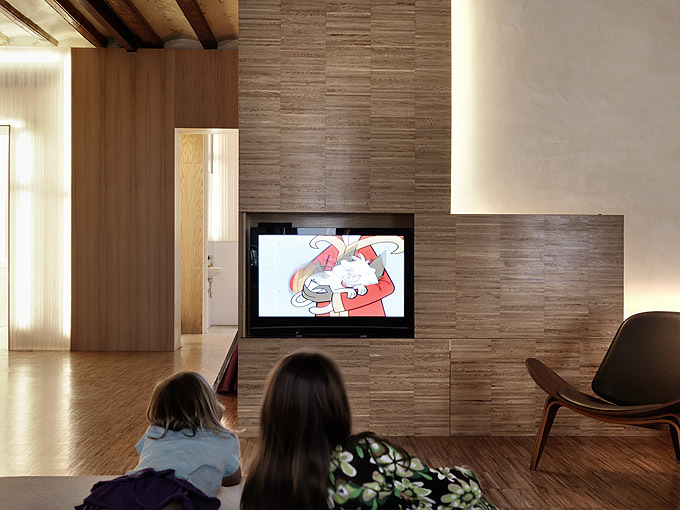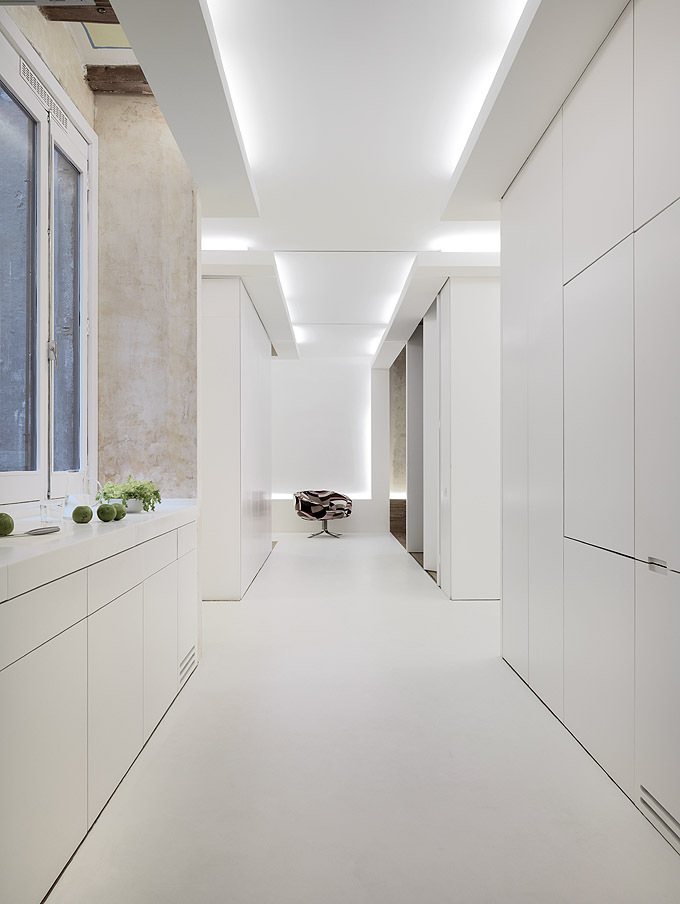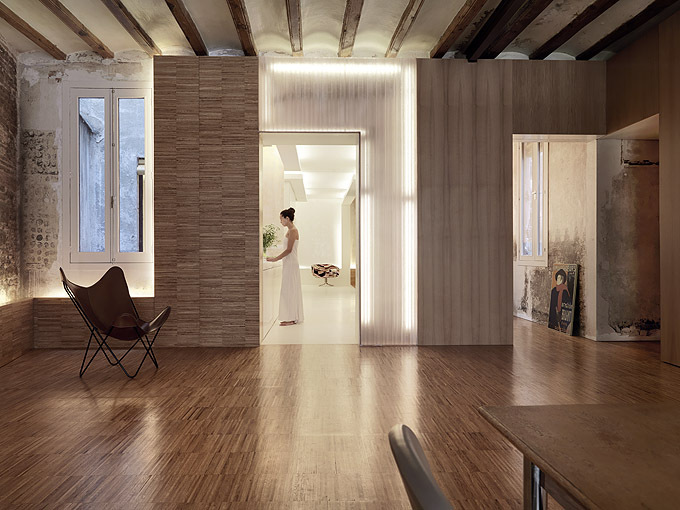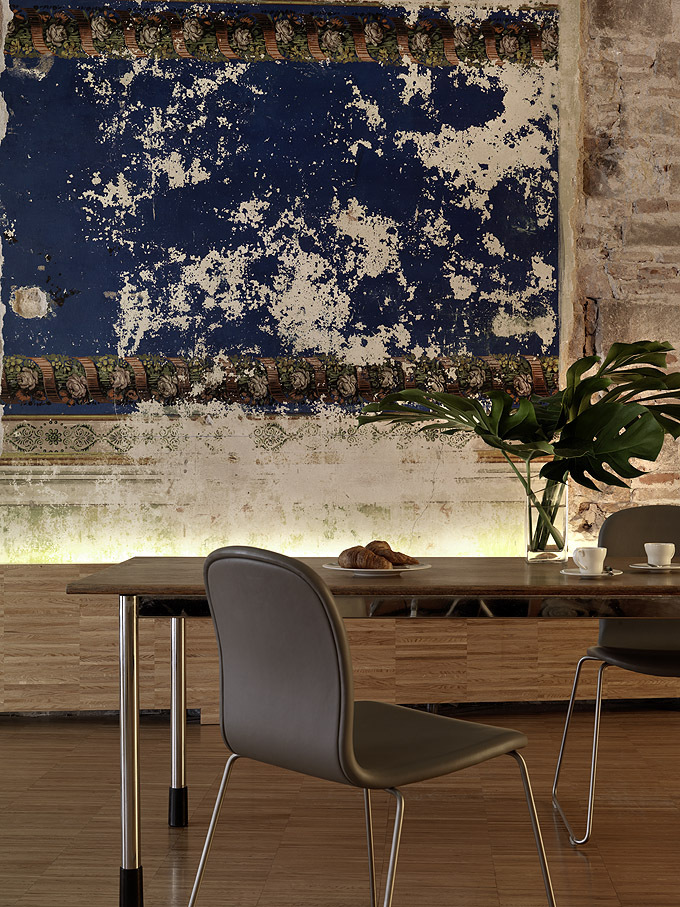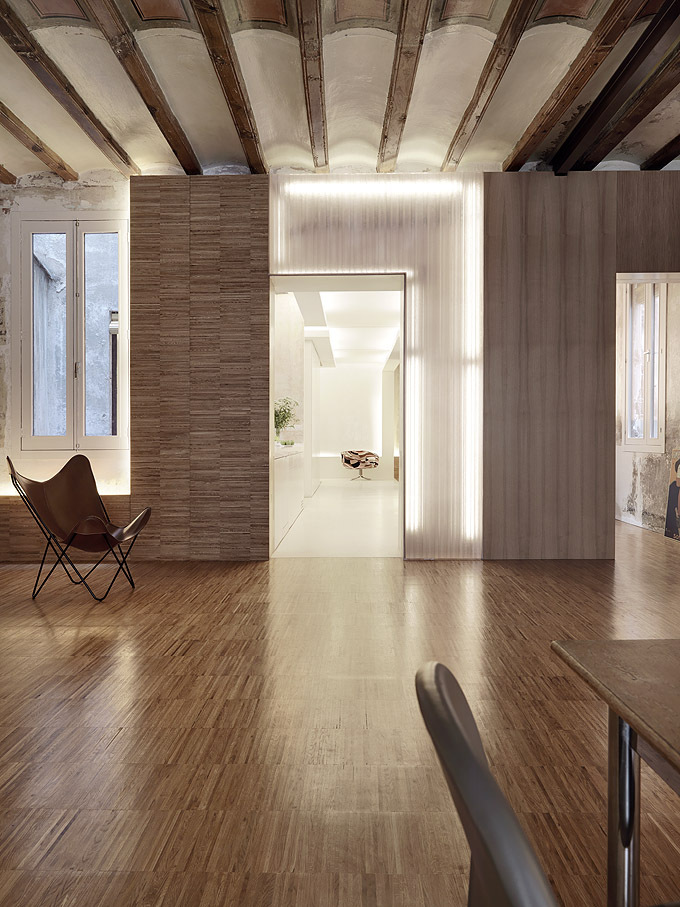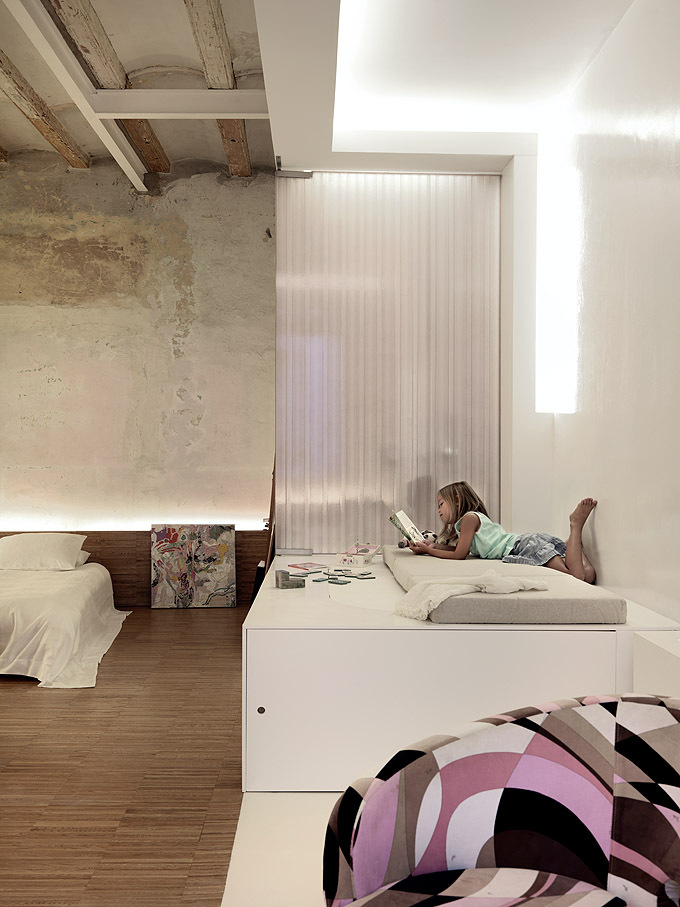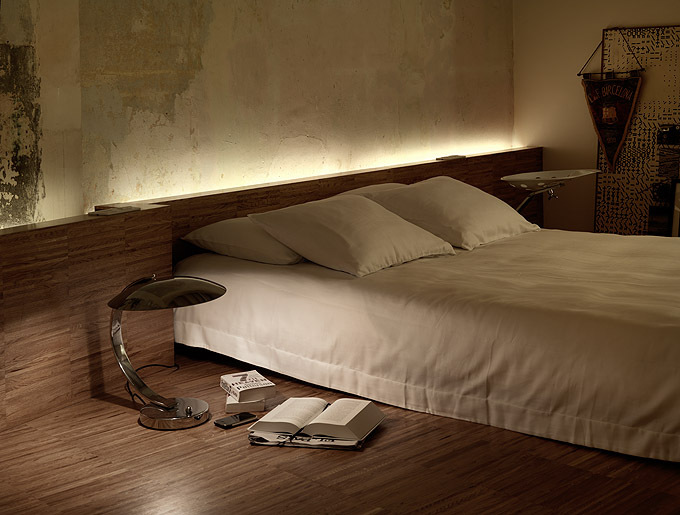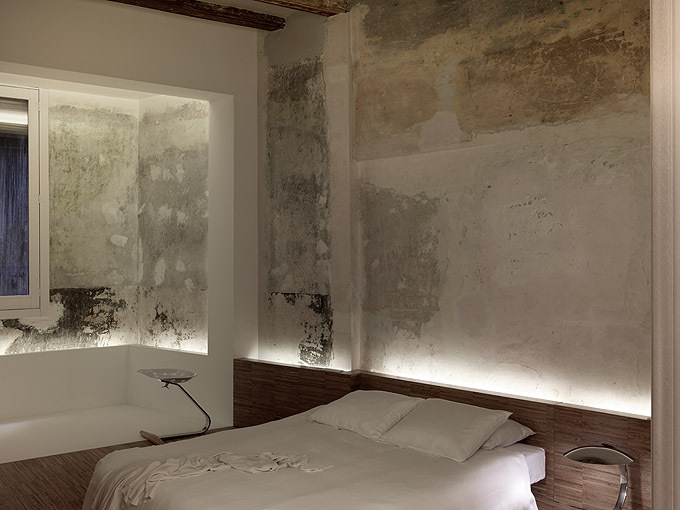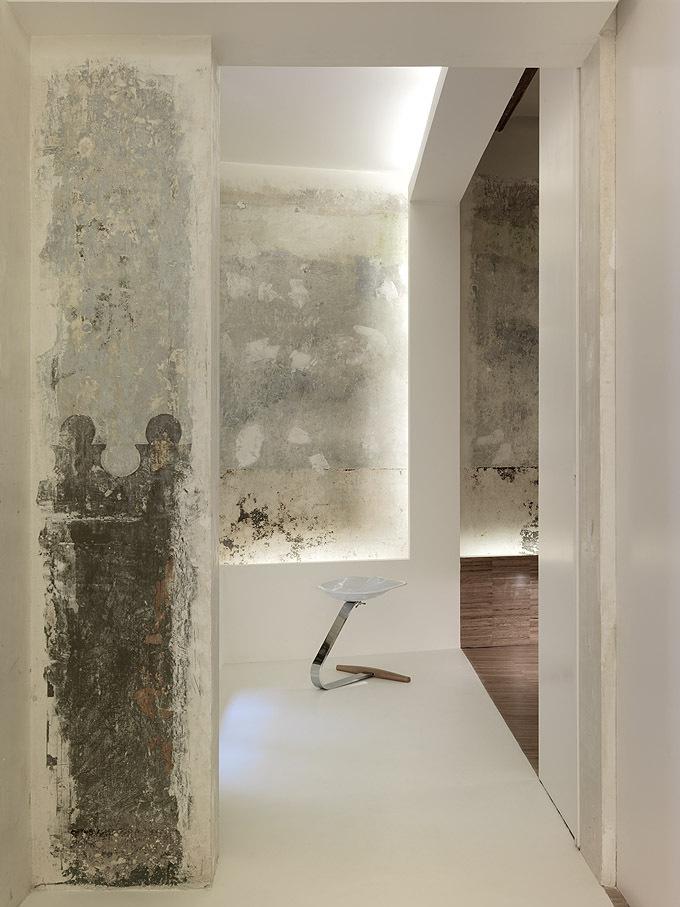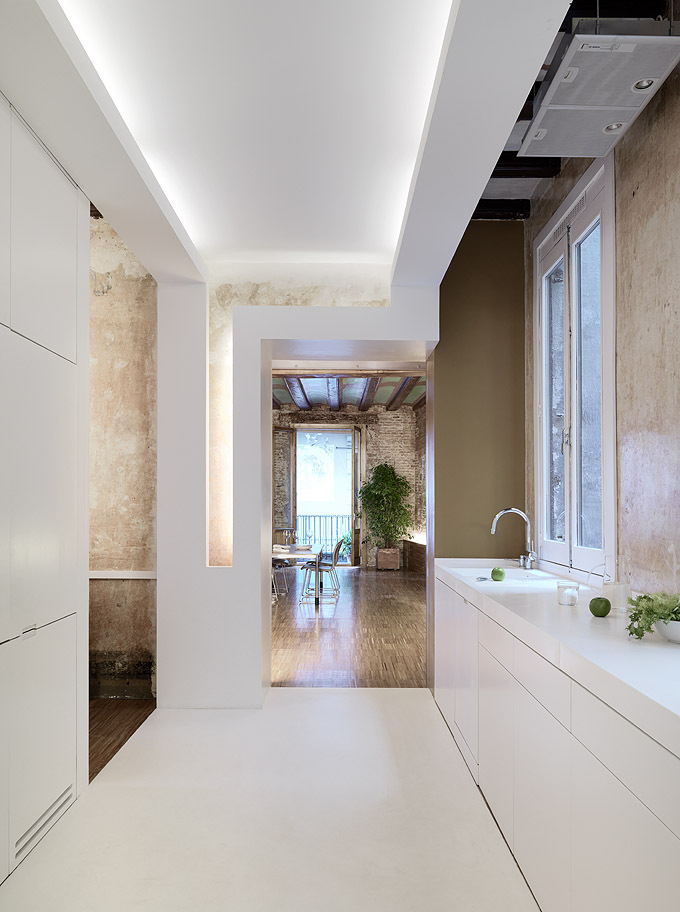When Swiss architect, Gus Wüstemann decided to convert a mid 19th century apartment in the historic area of Gotico in Barcelona, it was more than just a professional project, it was to provide a base for himself and his wife and two children.
The apartment looked out onto a narrow street through picture windows but the major problem was the lack of daylight towards the rear of the 2000 sq.ft. space. This problem was addressed by the creation of the Crusch Alba or white cross. In fact, a kitchen and bathroom were designed to form the shape of a cross, each section faced in white cabinets concealing each functional aspect of the rooms. Concealed lighting within the units created the necessary illumination for the apartment and at the same time introducing a modern note to an otherwise traditional flat.
The original Catalan features of the space have been retained, the walls stripped back to expose wall paintings and the rafters varnished to provide dust free surfaces.
The key word for this project is versatility, the apartment can function as an uninterrupted open loft like space or may be sectioned off into rooms by sliding doors. The home maintains a strong sense of heritage while accepting the contemporary genre. An apartment without limitations, without a specific program, the family can decide on a daily basis what they want it to be.
